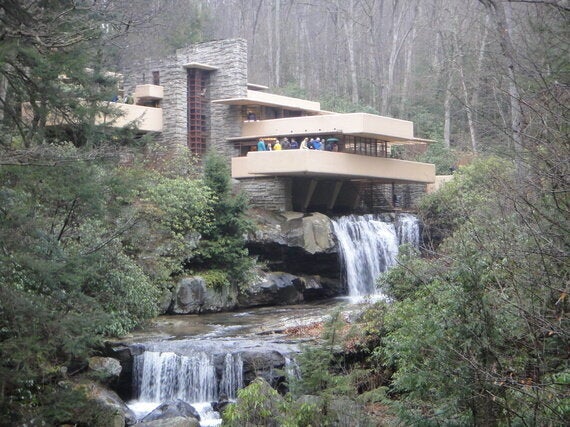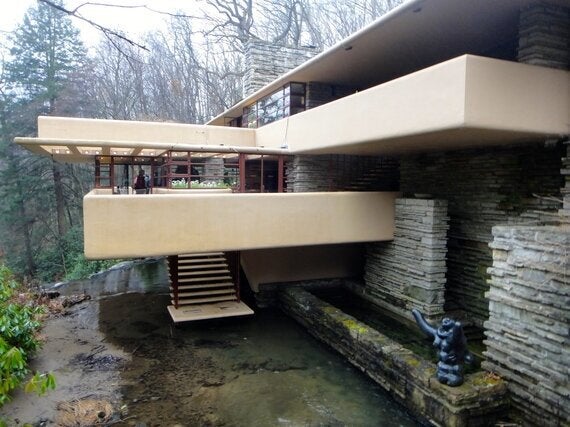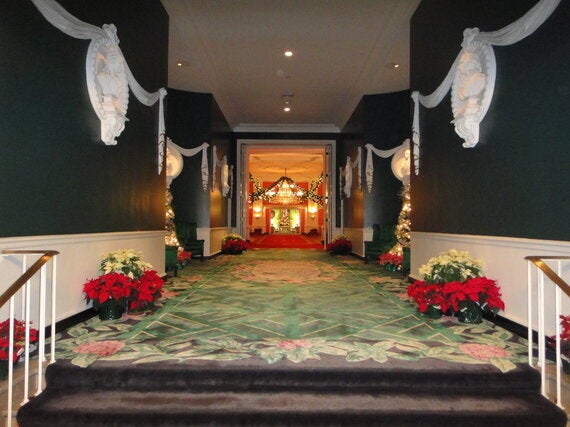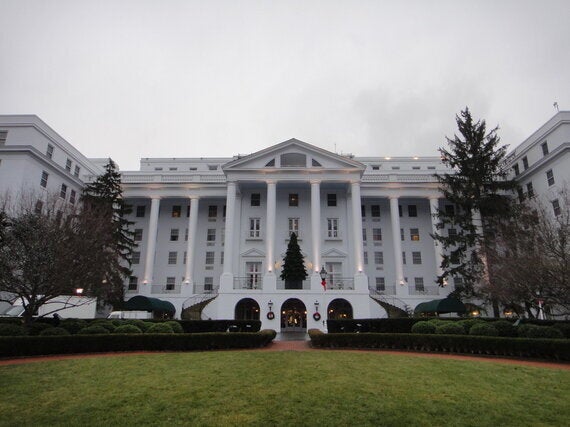This is the second instalment of a three-part series on driving to Florida. Picking up where we left off (see Escape Route to Florida #1: Pittsburgh), we were ready to see more of the country -- because one of the luxuries of a longer road trip is the freedom to veer off the highways onto the roads less traveled.
On the third and fourth days of our journey south, we took in a couple of cultural hotspots. We visited two National Historic Landmarks, very different but quintessentially American.
Fallingwater: American Zen
After checking out of the Renaissance Hotel on a misty Sunday morning, we set out through the Laurel Highlands to reach Mill Run. We were in the Allegheny Mountains, deep in Southwestern Pennsylvania cottage country. The landscape was bare-boned and grey in the late December drizzle, yet it was easy to see how glorious it could all be on a sunny summer day.
We arrived in good time for our 11.30 a.m. group tour of Fallingwater, probably the most famous house built in the 20th century, and one of the most bucket-listed spots in the western hemisphere.

Photo: Lin Stranberg; used with permission from WPA Conservancy
Fallingwater is a zen koan set in stone. The house, considered to be Frank Lloyd Wright's masterpiece, is improbably cantilevered over the Bear Run stream as it rushes over the rocks and down the mountainside to meet the Youghiogheny River. Designed in 1935 and completed in 1937, it still articulates a contemporary vision.
In the context of a visit that was highly regulated and stopwatch-precise, nothing could have prepared me for the sense of freedom I felt when I rounded the last bend of the footpath and came face to face with this spectacular piece of work.

Photo: Lin Stranberg; used with permission from WPA Conservancy
You just have to stop and stare. And you'll have time, because you'll have to wait here for a few minutes until one of the other groups leaves the house. No worries. It's worth waiting for.
A soul-lifting genius loci inhabits this house. The treatment of space, the sounds of nature, and the natural materials are transcendent. Boulders form the hearth; rocks from a nearby quarry, levelled and waxed, are set down in a field-to-floor treatment in the living room, and a natural spring trickles water inside and back out again in an Asian-inspired passageway to the guest quarters.
Except for periodic restorations and repairs, everything is pretty much as it was when Fallingwater was inhabited by its original owners.
Kudos to the Western Pennsylvania Conservancy for its careful stewardship of a rare treasure.
The Greenbrier: American Classic, with a twist
Driving through the rain and fog of dreary West Virginia was the least fun part of our trip. Night fell as we wound back and forth through the switchbacks on lonely Highway 60, and we checked into The Greenbrier late, tired and hungry. Disoriented by hours of trying to focus in the thick fog, arriving to the glitz and glitter of this over-the-top confection was like landing on another planet.

Photo: Lin Stranberg
Even in the light of day, The Greenbrier was unlike any other place we'd ever been. It's an American classic -- the oldest resort in the country and the host to 26 U.S. presidents, from James Monroe to George W. Bush. Davy Crockett stayed there, and so did Robert E. Lee.
The Greenbrier is a hotel with history. It started up in 1778 as White Sulphur Springs, evolved into a hotel called The Old White, was renamed The Greenbrier, and became an army hospital and diplomatic internment centre during World War II. It reopened after the war with a splashy refit by Dorothy Draper, the celebrated 20th century interior decorator, who gave it the twist.

Photo: Lin Stranberg
All endless hallways and rooms with exuberant colours, riotous textures and patterns, sweeping spaces and overscale dimensions, this is kickass décor in vivid HD. It is the opposite of minimalism, an overboard plunge into mid-century drama by the woman Frank Lloyd Wright famously called "an inferior desecrator." But the Greenbrier is Ms. Draper's masterpiece, and her vision, though vastly different, has held up as well as his.

Photo: Lin Stranberg
With its obliging service, abundance of activities (tennis! spa! falconry! tour the decommissioned Cold War bunker!), aisles of pricey shopping, aspirational dress code and guests-only gambling casino, The Greenbrier is a glorious homage to excess, American-style.
It's the other side of the moon from a boutique hotel; maybe closer to a cruise ship. There's not a hipster for miles around. It was all good. We loved our lavishly large room and the old-fashioned luxe of a deep sleep in total quiet.
Coming soon...Escape Route to Florida #3: Raleigh & Savannah
Stay tuned to Huffington Post for the third instalment in this 3-part blog series.